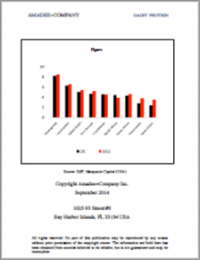Alfred T. Mahan, the famous naval strategist and author of The Influence of Sea Power Upon History, argued that national prosperity and power depended on control of the world's sea-lanes.: “Whoever rules the waves rules the world.”
Today, and for the last 78 years, the United States has ruled the waves and thereby ruled the world. And a major reason for its dominance, is the U.S. Navy's fleet of nuclear-powered submarines and aircraft carriers.
Since 9/11, U.S. military operations have been focused on the Middle East. However, resurging threats from peer and near-peer countries like Russia and China, as well as missile threats from Iran and North Korea, are shifting U.S. priorities towards higher-end capabilities.
After years of underinvestment, the U.S. Navy is focusing on rebuilding their aging fleet and procuring ships including submarines and aircraft carriers. The U.S. Navy currently has 283 deployable ships compared to a 355-ship goal.
After numerous up and down cycles, the U.S. Navy today is resurgent, thanks to the Trump Administration's large increases in defense spending. In fact,. the U.S. Navy is in the early stages of the strongest procurement cycle since the Reagan administration.
This report provides an in-depth look at how the nuclear-powered submarines and aircraft carriers markets will be impacted by the double-digit growth in U.S. Navy spending on these vessels over the next five to 30 years.
For background, there is a discussion of U.S. strategic nuclear forces and naval nuclear propulsion. A review of the operations, capabilities and strategy of the modern U.S Navy is given, followed by an analysis of the markets for nuclear-powered submarines and aircraft carriers. A more detailed analysis of nuclear-powered submarines and aircraft carriers technologies is provided. Finally, profiles of General Dynamics, Huntington Ingalls and BWX Technologies are given. These companies will be the primary beneficiaries of the U.S. Navy's 30-year shipbuilding plan, especially for submarines and aircraft carriers. For readers not familiar with nuclear power and how nuclear reactors work, an appendix explains these technologies.
The report includes 34 tables and 57 figures.




